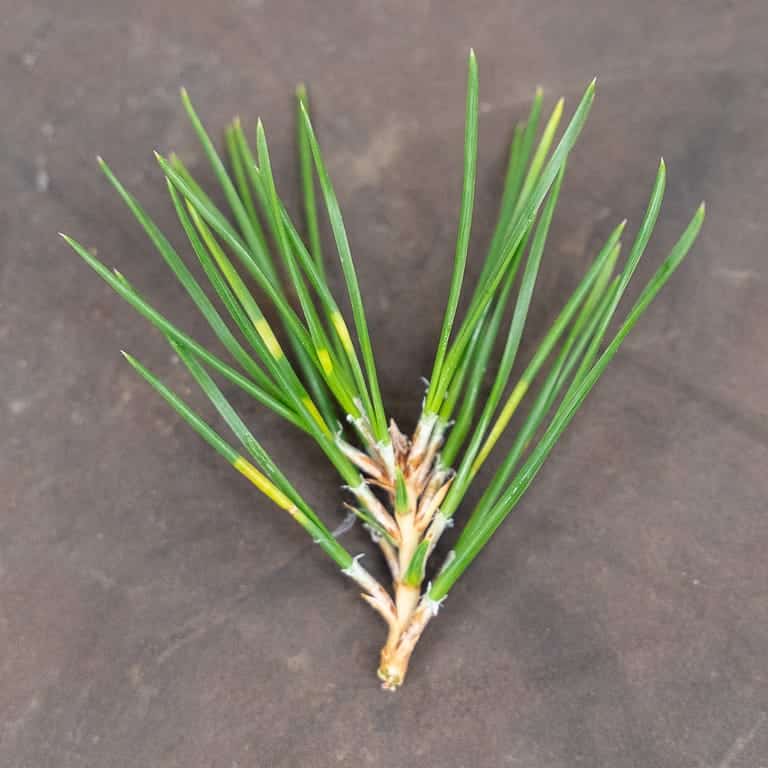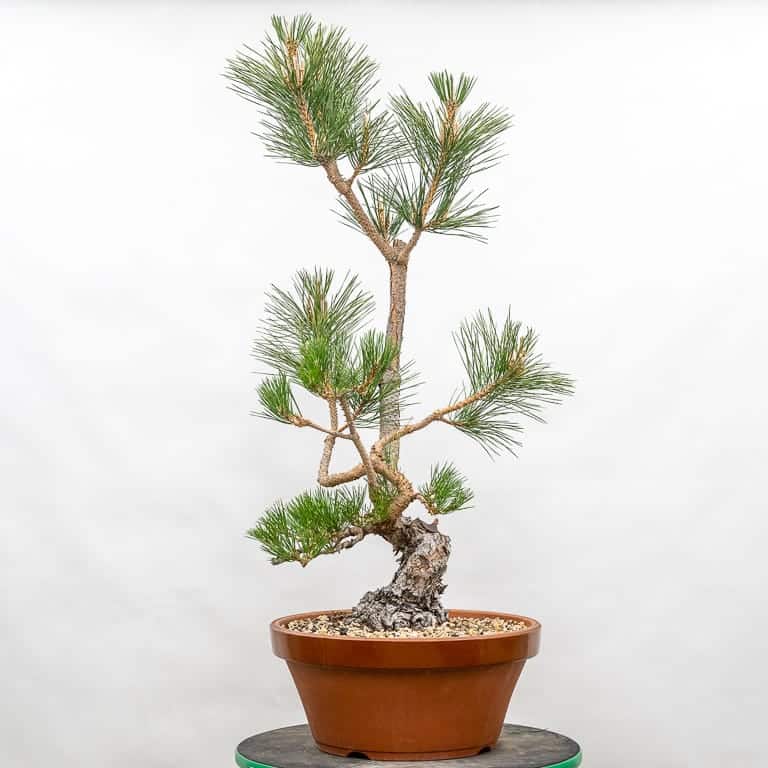I was surprised to find yellow banding on a few of my pines this fall. It’s not something I’ve seen much of in my garden over the years so it caught my attention when small yellow patches appeared.

Yellow banding on black pine needles
The overall health of the needles is good, and the damage is limited to a handful of needles per shoot. The photo below shows the most extensive banding.

Symptomatic shoot
Keen to find out what might be the cause, I sent a sample to Waypoint Analytical.
A few weeks later I got the result, but it wasn’t what I’d expected. Banding is the primary symptom of needle cast diseases, but the samples I sent were free from foliar pathogens. The banding was an abiotic symptom.
I’d also sent a sent a sample of the roots, and that’s where a candidate pathogen showed up.
The lab isolated a species from the Cylindrocarpon genus. Many species of Cylindrocarpon aren’t plant pathogens. Some, however, form parasitic relationships with their host and may be cause symptoms like the banding in my pines. As the sample the lab examined showed root rot in the feeder roots, there’s a chance Cylindrocarpon was the cause.
Cylindrocarpon hasn’t been extensively studied, so it’s not clear which fungicides are most effective controls. While I research my options, I’ll plan to repot the affected trees this winter in a drier mix – one with larger soil particles and/or less akadama.
Here’s what the tree that provided the samples looks like.

Fifteen-year-old black pine
I’d last worked on the tree in spring (see “Multiple sacrifice branches” for details). Now that it has filled in with summer growth, it’s time to thin crowded areas by removing unnecessary shoots and needles. Here’s the tree after this work.

After cutback and needle plucking

Close up of the future trunk
I plan to use a smaller container when I repot which will make it easier to keep the tree on the dry side. In the meantime, I’m allowing it to dry out between waterings to avoid additional stress on the roots.
Subscribe to Bonsai Tonight
New Posts Delivered Every Tuesday and Friday
Stefanos Papavasileiou says
Hi Jonas!
Haven’t deal with needle cast in the past, the main problem that usually have with my pines is blights. The only thing that can assure you success-as with all fungus problems- is to do the applications the right time. Fungus usually infects pines months earlier before you see the symptoms. Here in Athens-Greece in general we spray when candles are elongating and also repeat after one moth again, and before the Autumn rains.
More specifically: To manage Diplodia tip blight requires three fungicide applications, once when buds begin to swell (late April), again in early May, and again in mid-May. Dothistroma needle blight can be managed by spraying once in mid-May and again four to six weeks later. Note that trees that are infected with both diseases require a total of four sprays.
Best regards
Stefanos
Jonas Dupuich says
Thanks for the information Stefanos, I appreciate it. You’ve learned a lot about combating fungus and blight over the past few years – am happy you’ve found an effective approach!
Andy Johnson says
Hi Jonas.
I have a question about this pine. You mention: “Now that it has filled in with summer growth, it’s time to thin crowded areas by removing unnecessary shoots and needles.”
Why do you do this on a pine tree that is still in development? If, as I understand it, needles are the solar panels for pines and are used by the tree to photosynthesis, aren’t you weakening the tree by removing them? What benefit does removing these now provide?
Thanks Jonas.
Andy
Jonas Dupuich says
Hi Andy – great question! That’s right – foliage serves as solar panels for all species grown as bonsai. By reducing a tree’s capacity to produce and store resources, we can encourage the tree to create the kind of growth we need to keep bonsai small over long periods of time. If we let bonsai grow at their maximum rate, they’ll produce long shoots that make it impossible to maintain their size. Equally important, thinning shoots and foliage lets light into the tree’s interior which can stimulate new buds – another approach we can use to keep trees small. I can think of a few other resources so I’ll make a post on the topic soon. Thanks for the note!